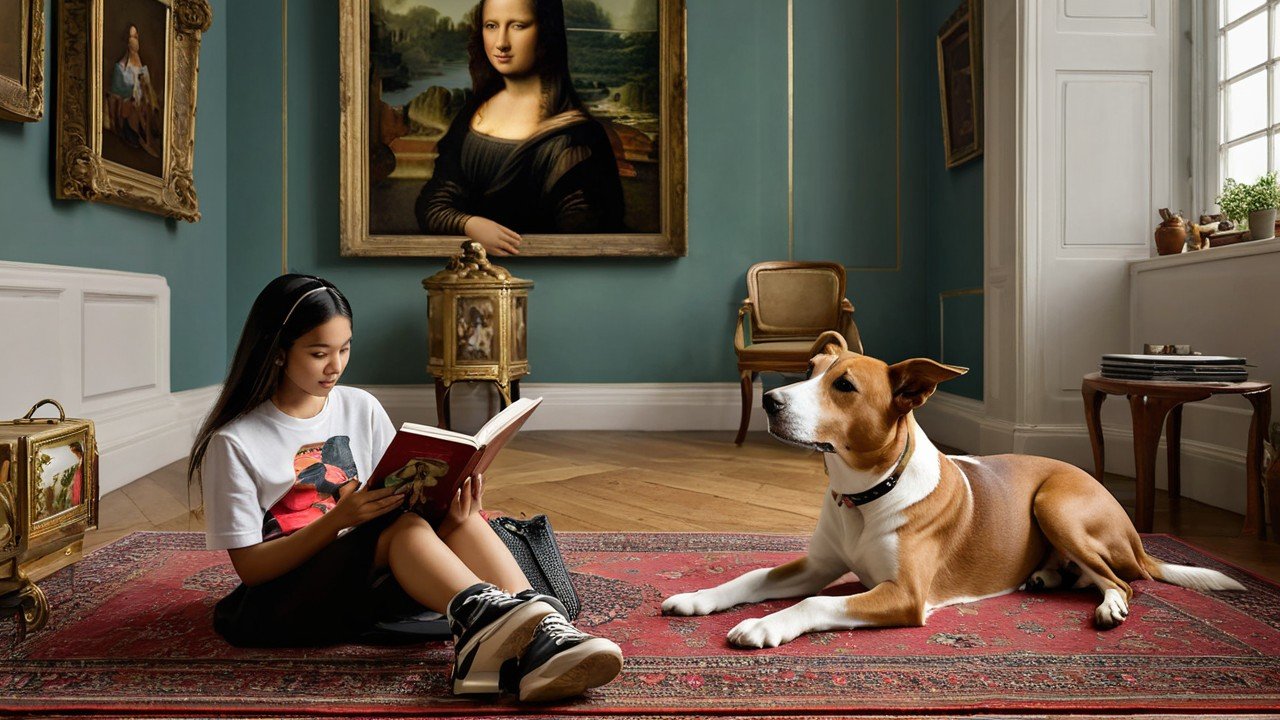I love painting animals, so I love painting pet portraits. So, I thought it would be interesting to see how long it takes to tame an animal. Apparently, it’s too long! Pets have been a part of our lives for thousands of years, serving as loyal companions, sources of comfort and entertainment. So it’s no surprise to find that our feathered, window-dressed friends have been the subject of many works of art throughout history. From ancient cave paintings to modern paintings, animal painting is one of the most popular and enduring art forms. Here, I look at the fascinating history of pet art, tracing its evolution from early animal portraits to contemporary works that capture the unique beauty and personality of our beloved pets.
Ancient animal art dates back to early examples of human art. Cave paintings dating back more than 30,000 years, such as the Chauvet Cave in France, often depict animals such as buffalo, horses and mammoths. Although these were not real animals, they were important to early humans. As the world evolved and animals played a more important role in our lives, dogs and cats began to appear in ancient paintings. Apparently there is a 9,000-year-old statue of a figure holding a dog on a leash in the Bhimbetka Rock in India. Similar dog images appear to be carved into rocks at Shuwamis and Juba in western Saudi Arabia. However, by Greco-Roman times, the story became clearer, and dogs were often depicted in art as hunting companions, as a symbol of loyalty and fidelity.
For cats, there are also signs of early adoption. For example, around 9500 B.C., a cat was carefully buried by its owner in a cemetery in Cyprus. The ancient Egyptians kept cats to repel insects and displayed their art as a symbol of protection and prosperity. Egyptian paintings depicting domestic cats show that they were kept as pets around 4000 BC. Soon, Egyptian cats were buried with people to show this close relationship. Ancient Egyptians are now thought to have played an important role in shaping the behavior of today’s domestic cats.
Examples of ancient animal art can be found across different cultures and eras. The Moche people of Peru (200-850 AD) had previously made pottery in the shapes of animals, including dogs and big cats. In 17th-century Japan (and throughout the 19th and 20th centuries), ukiyo-e woodblock prints often depicted cats and other animals as playful and mischievous subjects. Overall, animal art demonstrates how animals have been viewed and appreciated in different cultures throughout history. These images illustrate the important role pets have played in human life over thousands of years and the power of animals as subjects in art.
Although some people kept animals in the Middle Ages, this is not the case today, especially among the lower classes. The cost of keeping and caring for a pet is prohibitive for most people, but dogs are often used for working purposes, such as hunting and guarding property. Therefore, they sometimes enter hunting grounds or become close friends with nobles. Medieval art enabled the church to see animals in religious contexts, such as decorative scrolls and church paintings. Fun fact: During the Middle Ages from the 1400s to the 1800s, churches sometimes hired “dog killers” whose job was to keep dogs out of harm’s way during prayers. These dogs are strays or dogs that follow their owners to church. Sometimes the whistler also acts as a “lazy salesman,” hitting sleeping believers on the head with a long pole so they don’t miss the sermon.
In Europe during the 1800s and 1900s, pet ownership increased among the middle and upper classes. As people began to migrate from rural areas to cities, pets such as dogs and cats became popular companions and status symbols.
Increased pet ownership has led to increased demand for pet portraits and other forms of art. Wealthy families commissioned artists to create paintings and sculptures of their beloved pets. One of the most famous pet artists of our time, Sir Edwin Landseer was a British artist known for his realistic, lifelike portraits of dogs. His work was extremely popular and helped spread the practice of animal photography beyond recognized painting, and since then pet portraits have included many other mediums such as paintings, images, and objects. Overall, the 18th and 19th centuries changed the history of pet art, as pets began to be loved and valued like family members. This period helped establish the popularity of pet art as an art form that captures the unique beauty and personality of our animal friends.
